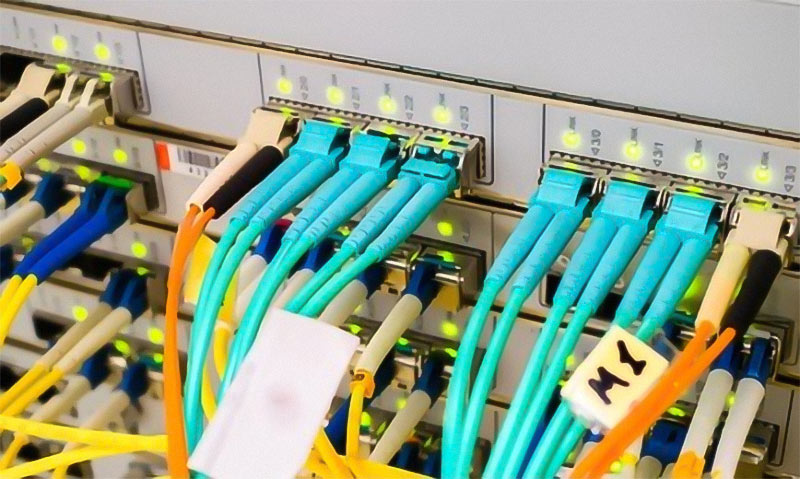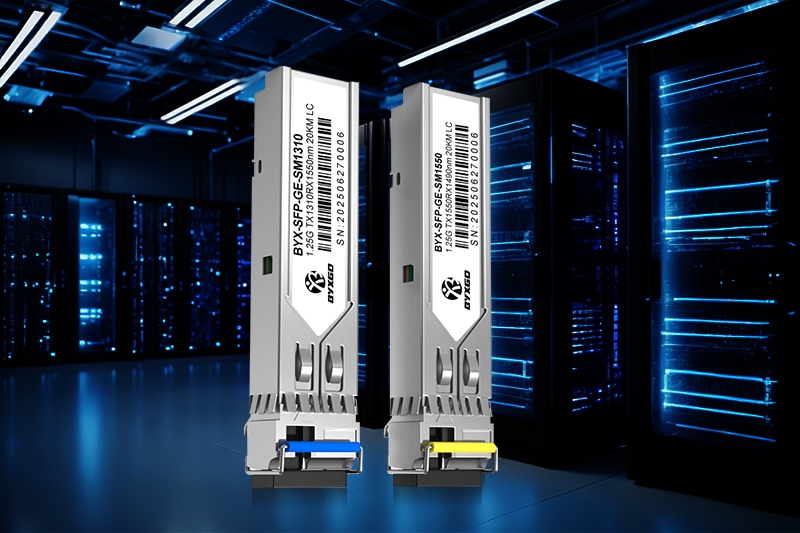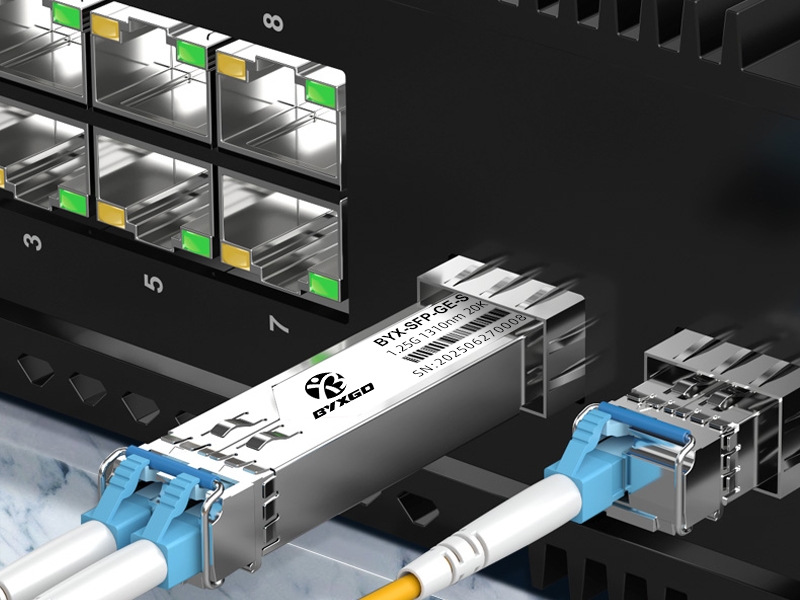Data Center 10G SFP+ Module: Choosing the Right 10G Module for Network Upgrade

When upgrading a data center network, one burning question always arises: How do you improve speed and efficiency significantly… without breaking the bank or ripping out all or most of your infrastructure? Remember the last time you found yourself taking on growing demands to move information faster and create more reliable data connections? Add to that cost and compatibility issues! How do you address all these simultaneously while making a sound choice in your investment with a 10G SFP+ module? Now you’re faced with choosing a 10G SFP+ that balances the challenges, integrates performance, and streamlines your network architecture. This article will help guide you through the available options, and in the end, you will be confident that the choice you made is not only the best one for your operational needs but the best one overall!
Why 10G SFP+ is the Right Choice for Your Data Center
When considering an upgrade to a data center network, there are some critical questions that need to be answered. How can you increase speeds without substantial infrastructure changes? What are the options for simplifying complex architectures while staying on budget? These are challenges that prompt a discussion on new technologies that not only improve performance but also provide smarter, scalable ways to build networks.
The first technology to consider is the 10G SFP+ module. In addition to increased speed in data transfers, 10GbE SFP+ modules provide a higher density of ports, allowing for smaller physical footprints for network equipment. They have also been designed to use less power than previous generations of SFP modules, an important factor in energy costs. The use of SFP+ technology also allows for many different types of network architectures to be deployed, so whether you need to expand your existing networks or use them for an upgrade, you can do so reliably.
When you compare 10G SFP+ with older technology, such as 1G SFP modules, the benefits become clear. Power consumption is reduced, providing less cooling demand. The footprint is smaller, resulting in more ports per switch. The cost savings make high-speed networking affordable for the masses.
These benefits are why 10G SFP+ is not just a speed upgrade, but a true infrastructure opportunity for an efficient data center network. 10G SFP+ is truly a foundational technology for building and maintaining an optimized network architecture that is future-proof, scalable, and able to adapt to increasingly efficient networks.

Mastering 10G SFP+ Selection: A Practical Guide to Specifications and Compatibility
How do you select the right 10G SFP+ module when you have so many options in terms of type, distance, and compatibility? Sometimes, when faced with options, figuring out the right specifications can seem overwhelming or even a maze. While there are many different specifications and compatibilities, understanding the key differences and compatibility steps can help simplify the process. In this section, we will simplify the complications to provide you with clear-cut criteria and practical suggestions to help you confidently select 10GbE SFP+ modules that are tailored to the unique specifications of your network and provide reliable, consistent performance.
Choosing the Right Module Type: Fiber, Copper and Their Key Differences
When upgrading your network, the first decision to make is fiber modules or copper Direct Attach Cables (DAC); both are used to connect your devices through a 10G SFP+ switch, but they fundamentally differ in performance, price, and deployment complexity. Knowing the differences helps you identify the correct solution for your specific data center requirements between 10G SFP+ copper and fiber.
| Feature | Fiber Modules | Copper DAC Cables |
| Transmission Distance | Up to 10+ kilometers (depending on fiber type) | Typically less than 15 meters |
| Cable Type | Optical fiber | Twinax copper cable |
| Cost | Higher initial investment | Lower upfront cost |
| Power Consumption | Lower power usage | Slightly higher power use |
| Deployment Complexity | Requires fiber handling expertise | Simple plug-and-play |
| Typical Application | Inter-rack or long-distance links | Within-rack connections |
Fiber modules are excellent in supporting longer distances, ideal for connecting different racks, as well as separating rooms in a data center. The optical fiber’s capabilities cover numerous kilometers with no loss in signal strength compared to copper. Additionally, fiber consumes less power, which ultimately helps large environments reduce energy costs.
Copper DAC cables display their superiority for distances less than 15 meters; the smaller the distance, the better the signal quality. When it comes to price and ease of installation, copper DAC cables are much more advantageous when the distance is 5 meters or less, especially if the budget is constrained. Regardless of the length, copper DAC cables make for a simpler installation as they are plug-and-play. Copper cables are generally thicker than fiber cables and are simply less flexible, so when you are using copper cables, and there is less complexity with cable management, they are worth using in populated conditions.
Some things to consider:
- If the connection is beyond 10 meters or crossing floors, fiber modules are much more stable and energy efficient.
- For less than 5 meters or just needing some quick connections on a budget, copper DAC connections have speed, installation time, and cost-effectiveness on their side.
With this in mind, it’s important to have the type of connection that works, as well as keeping costs and installation time down, so finding the right type and fit is important. The option of copper or fiber is situated in the overall management of distance requirements, budget of choice, and complexity of network design for the right overall fit in your 10G SFP+ switch platform.

The Compatibility Challenge: Ensuring Your 10G SFP+ Works Flawlessly
Confirming your 10G SFP+ module is working as it should with your network gear can be much trickier than it might seem. Compatibility issues arise often, especially when placing a Cisco 10G SFP module too close to a third-party module. Many of the issues stem from the implementation of firmware locks by vendors to restrict the use of alternative parts, which can cause major implications regarding reliability and support.
Starting off with the manufacturer’s compatibility checklists is always best practice—these compatibility documents are often used for analyzing the best product to choose. By locating your switch model and firmware, you can review which SFP+ modules have been accepted by the OEM.
There are also considerations to note regarding the firmware that has been downloaded onto your switches. Upgrading the firmware can, and rather regularly does, change module compatibility and stability. Always assess if the intended 10G SFP+ module is a supported network module by the switch before the acquisition or installation of the module itself.
Third-party modules can provide an enticing value but carry risk. Although competent, well-tested third-party SFP+ modules can provide potentially strong performance while allowing improved bottom-line performance, determining the quality of modules becomes paramount.
With lab tests confirming that high-quality third-party 10G SFP+ modules can yield performance like that of an OEM part, the throughput checks remain steady under load and should typically not show packet loss rates greater than 0.01% (the packet loss metric should match Cisco 10G SFP packet loss studies).
The decision falls on you regarding the selection of either OEM or a third-party module, while leveraging your tolerance for risk and your bottom line. If at the point of utilizing third-party alternatives—make SURE you only use modules from suppliers that guarantee they have been tested and are compatible.
In conclusion, there are valuable 10G SFP+ modules that provide an ample option outside of OEM cost. The difference lies with the verification checklists and acquiring suppliers that can guarantee the product has been tested to reduce any risk of your network having problems that could have been avoided.
From Plan to Reality: Practical Deployment and Troubleshooting Tips
So, you’ve found your ideal 10G SFP+ module. Insight can be put into action, but we know the plans you made are about to get derailed by real-world challenges, such as where you plug it in and the installation logistics. Overcoming the real-world problems, your past experience and expertise can lend money and talent the practical skills to troubleshoot obstacles. In this section, we will present actionable tips and a relatable case study to help you deploy with confidence to a typical 10G PON fiber network while avoiding common pitfalls, as well as keeping a stable, high-performance 10G network that suits the needs of your data center.
Real-World Case Study: A 10G Upgrade Success
As a mid-sized data center continued to grow, tensions were rising in the data center realm due to a sluggish 1G network. More data was flooding the data center, and as a result, application bottlenecks were slowing applications down and exacerbating user complaints. Budget constraints and mixed equipment brands only complicated the situation in terms of dual paths to the future, but it was clear a 10G SFP+ upgrade was needed to enable cutting-edge performance and to avoid blowing budgets to improve performance.
We developed an upgrade scenario by managing connections according to distance and cost. For intra-rack connectivity, we used copper DAC cables that created both quick and cost-effective links. We only used fiber modules to create long and outsized runs between different racks and/or floors, meanwhile saving on power consumption and maintaining higher reliability. After the power upgrade, we reviewed our systems and ensured a third-party system did not interfere with our existing systems.
We started with the installation, focusing on cable management to ensure clear runs and properly seated modules, avoiding any faults later on. It was important that we had a systematic deployment while keeping an eye on quality to avoid too many faults in the future hardware deployment stage.
After the upgrade, we observed that the core of our network was 8x faster and that latency increases had dropped from the applications. We also observed that application response times decreased by roughly 40 percent, which was a good boost to our user satisfaction levels and overall productivity. Maintenance requirements dropped due to reliability, so the operational cost decreased, while the project ROI showed early indications. Overall, we felt good about the data center’s ROI for 10G SFP+s and felt it was good value for a network upgrade to future-proof a data center.

Troubleshooting & Maintenance: Your Guide to a Stable 10G Network
A well designed 10G SFP+ network can have issues. Fast detection and resolution methods will allow for an agile troubleshooting mentality where downtime or network performance drops are only a secondary concern but anticipated—knowing your preventative measures and understanding common causes will go a long way in maintaining a stable, high-speed data center network.
We recommend creating or following a troubleshooting list to save you time:
- Dirty fiber — Dirty connectors most often will fail links or fail some connections, and/or other adjacent connections. We recommend always inspecting and cleaning fiber.
- Module seating — Loose modules or modules that are not seated properly will break links with connections. When in doubt, always reseat the module until you hear the known clicking sound.
- Consult switch logs — Command-line tools with the switch type “or show interface transceiver” output can give you feedback indicators such as status or signal power, etc.
- Firmware checks — Confirm that the overall switch and SFP+ modules need to be checked for firmware version or in general, ensuring that the switch and SFP+ status indicators turn green.
Common Questions:
- My 10G SFP+ will not provide the link? You may need to reconfirm compatibility and seating of the module in the switch, or check the vendor’s updated version of switch firmware.
- How do I fix the link instability or links dropping? Check fiber cleanliness, re-seat modules, and check the switch logs for errors.
- Is there a temperature effect on my module? Yes, excessive heating will shorten the overall life of the module and likely affect its performance.
As a final note, ongoing maintenance of the environmental temperature performance of your power supply is necessary for prolonging the life of modules and ensuring good ongoing quality of work. Take care of your 10G SFP+ modules like they are instruments—as minor as they are to transfer coverings, all of these minimize potential burrs and scratches on your fiber connectors—with the goal to have a solid foundation for data center network performance.
The Road Ahead: 10G SFP+ in a 25G and 40G World
Though 25G and 40G speeds are being adopted more widely, 10G SFP+ is still an integral part of most data center networks. 10G is not going away, but it is changing, acting as a tried-and-tested “tributary” speed with a consistent bandwidth pipe. 10G is the right speed for applications or equipment where the maximum bandwidth capability is not required, such as in more cost-effective backlinks.
In a large-scale network, 10G SFP+ modules typically provide server-to-switch or switch-to-switch connections that act as tributaries to support any main core 25G and 40G layer connection. This tributary function is designed to help maintain performance at a reasonable cost.
Up next, 10G SFP+ modules will continue to develop. Technological innovation continues to focus on lower power consumption for more green operations and greater port density, driving the ability to run more SFP modules per switch, along with improved technology development for hybrid network compatibility, facilitating transition paths for data centers to migrate from 10G to greater speeds.
In a nutshell, trends for 10G SFP+ show continued relevance to support flexible and efficient network architecture with evolving bandwidth requirements without the added complexity.
Conclusion
Finding the right SFP+ module in 10G serves as the foundation for a successful and seamless network upgrade. Balancing specifications, compatibility, and cost will help ensure that existing performance is improved with no surprises. Whether providing the connection between servers or extending data center reach, a quality 10GbE SFP+ module will help to optimize reliable speed.
To derive all of the above benefits, take the time to verify compatibility and determine your network needs before you buy 10G SFP+ modules. Consulting with an expert is also advisable, as they can help guide you toward the best solution that achieves the desired and expected outcome while preparing for future upgrades to an efficient network scalable with the requirements of your business.
